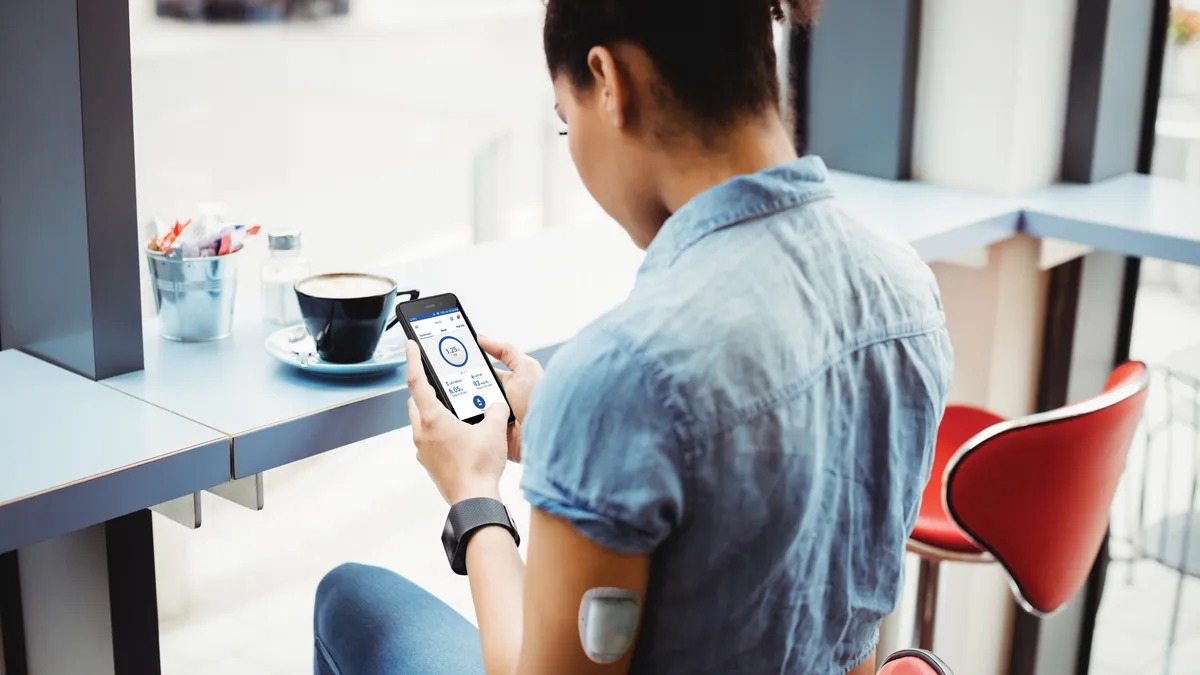While the global resurgence of COVID-19 cases in November and December left procedure-dependent medtechs stumbling into 2021, diabetes technology companies like Tandem Diabetes Care and Insulet closed out the year on a high and expect the momentum to continue.
Diabetes tech has remained resilient throughout the coronavirus pandemic as patients have stayed out of healthcare facilities and virtual care and remote patient monitoring have skyrocketed, accelerating trends seen before the pandemic.
In 2020, insulin pump makers Insulet and Tandem grew profits by $102 million and $66 million, up 21% and 34%, respectively, compared to 2019. Continuous glucose monitoring company Dexcom brought in $1.3 billion of gross profit in 2020, growth of roughly $349 million compared to the prior year.
All three companies are guiding toward another strong year in 2021, while companies across the medtech industry are taking a more cautious approach or withholding guidance altogether.
Wall Street analysts remain bullish on the future of diabetes tech, pointing to advancements in CGMs and insulin pumps and further expansion into large, untapped patient populations for both Type 1 and Type 2 diabetes.
Insulet CEO Shacey Petrovic said during a Tuesday earnings call that the company exceeded pre-pandemic expectations for the year and fourth quarter expectations coming out of the third quarter. Insulet netted $904 million in revenue, up year over year by 22.5% and beating expectations.
The growth in usage of CGMs and insulin pumps led to a 31% revenue increase for Dexcom in 2020 and a 38% sales increase for Tandem.
Tandem CEO John Sheridan said during a Wednesday earnings call that despite managing some slowdown from the pandemic throughout the year and heading into the fourth quarter, 2020 sales were a record high of nearly $500 million.
The company projects 2021 sales to fall in a range of $600-$615 million, representing 20-23% growth over last year.
Investors seemed to respond well to Tandem’s 2020 results as shares were trading up by nearly 13% after the market closed Wednesday.
Craig-Hallum analyst Alexander Nowak gushed that Tandem's fourth-quarter success "demonstrates the golden age of diabetes care is still here."
2021 guidance & product launches
The launch of Insulet's Omnipod 5 pump is expected to be a bright spot for the company and a key growth driver going forward, with some analysts calling it one of medtech's biggest launches of the year. The insulin pump patch can use an algorithm to connect with CGMs and will compete with Tandem's Control-IQ technology, which was the first FDA-cleared algorithm for use with a fully interoperable, automated insulin dosing system.
Insulet projected 2021 revenue growth between 15-20%, with its Omnipod insulin pump products to grow between 17-21%.
Petrovic confirmed that after delays due to COVID-19 priorities, the FDA is now reviewing the product and a limited release in the first half of the year is still expected. Insulet plans to release data for the Omnipod 5 during the annual Endocrine Society conference in March.
Still, William Blair analysts believe the limited launch and slower ramp-up could delay revenue contributions until next year.
"As with most of Insulet's prior product launches, it will take several quarters to roll out Omnipod 5 as it looks to ensure it has adequate supply and training materials to ensure a smooth launch for its users," the analysts wrote. "As a result, we do not expect Omnipod 5 approval to be a meaningful catalyst upon approval, but rather a gradual and building tailwind through 2021, with a more material impact on 2022."
Dexcom plans to release the G7 CGM system at the end of 2021. J.P. Morgan analysts were bullish on the impact of the product despite the second-half launch, writing that it will help drive the company beyond its 2021 guidance of 15-20% revenue growth, much like the last two years' performances.
DTC campaigns
Both Dexcom and Insulet were bullish on the impact of direct-to-consumer advertising and plan to utilize this strategy going forward.
Petrovic said DTC advertising has helped drive awareness among potential patients and will be a strategic priority going forward.
CEO Kevin Sayer said during Dexcom’s earnings call that a Super Bowl TV commercial increased awareness for diabetes patients and treatments, which should drive up demand and lower costs.
The comments came after Dexcom faced backlash from the Super Bowl ad, spurring some diabetes patients to note that while the device may be lifesaving, high costs and lack of coverage limit access.
However, a spokesperson with the American Diabetes Association believes that access improvements will require a more complex approach.
Dexcom's DTC venture was not a small investment as the cost for 30 seconds of air time during the Super Bowl is estimated to be about $5.5 million, not including the costs of producing the commercial.
Targeting Type 2 population
All three companies point to the Type 2 diabetes population as a growth driver, for both insulin intensive patients and non-intensive patients. Dexcom projects that the insulin intensive Type 2 population is only about 15% penetrated and market research conducted by the company shows a willingness to use CGMs for both those patients and non-insulin intensive patients.
Insulet is already seeing growth among patients with Type 2 diabetes, with 35-40% of new users in the fourth quarter coming from this population. However, Petrovic still sees a large opportunity and projected a target of about 2 million insulin-dependent Type 2 patients in the U.S.
Sheridan said that while Type 2 patients make up less than 10% of current Tandem customers, the potential among insulin intensive Type 2 patients is similar to that of Type 1 patients. The CEO said that reimbursement among payers has recently improved for Type 2 patients and the company is currently looking to expand indications of products.
Along with new patient populations like non-insulin intensive patients, analysts expect diabetes tech usage among current Type 1 and Type 2 populations to grow.
SVB Leerink analysts view the market penetration for CGMs among insulin intensive patients as a matter of when the devices will be adopted not if they will be, writing in a recent report that CGM penetration among these patients "could near 100% within the next 3-5 years … with [Dexcom] poised to retain a market-leading position."
The success of CGMs from Dexcom and Abbott Laboratories — which reported a 43% year-over-year sales increase in 2020 for its FreeStyle Libre system — is likely to ripple out to the insulin pump companies and boost the entire diabetes tech market.
"What the CGM companies have done is really dramatically displace blood glucose monitoring in the Type 1 population, and now they have their sites set on the Type 2 population," Petrovic said. "As we see progress and further advancement in the adoption of CGMs, this is a great trend for us in the market."

















